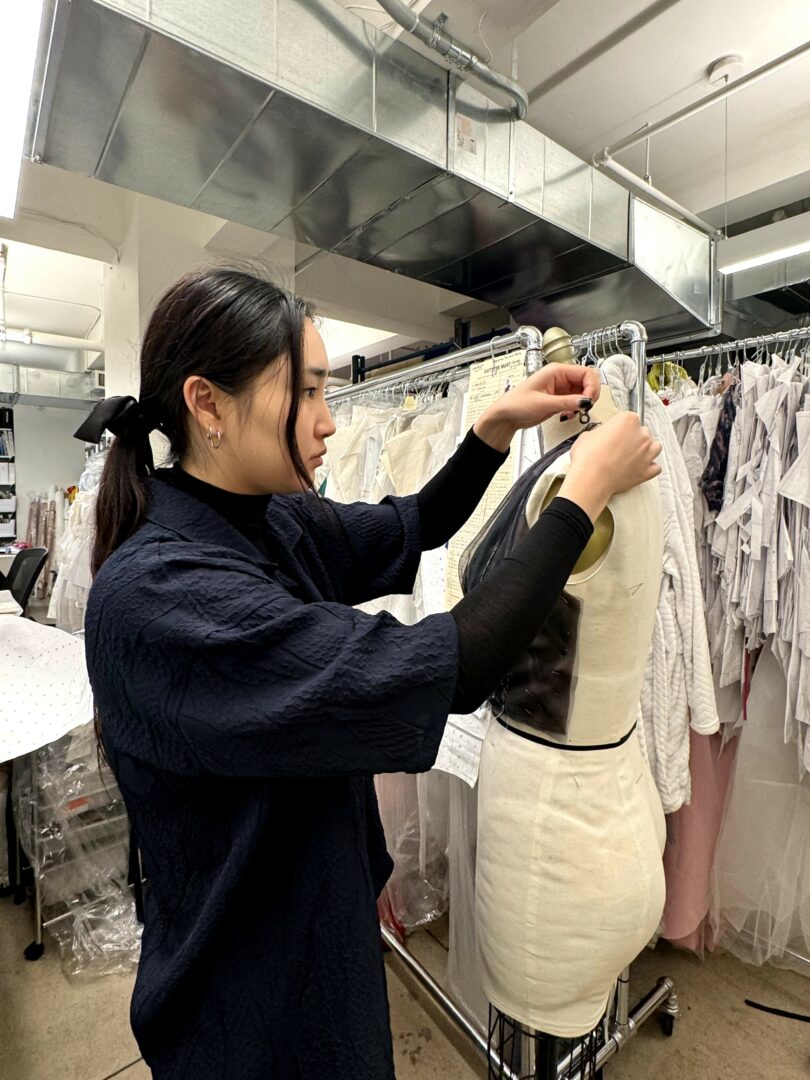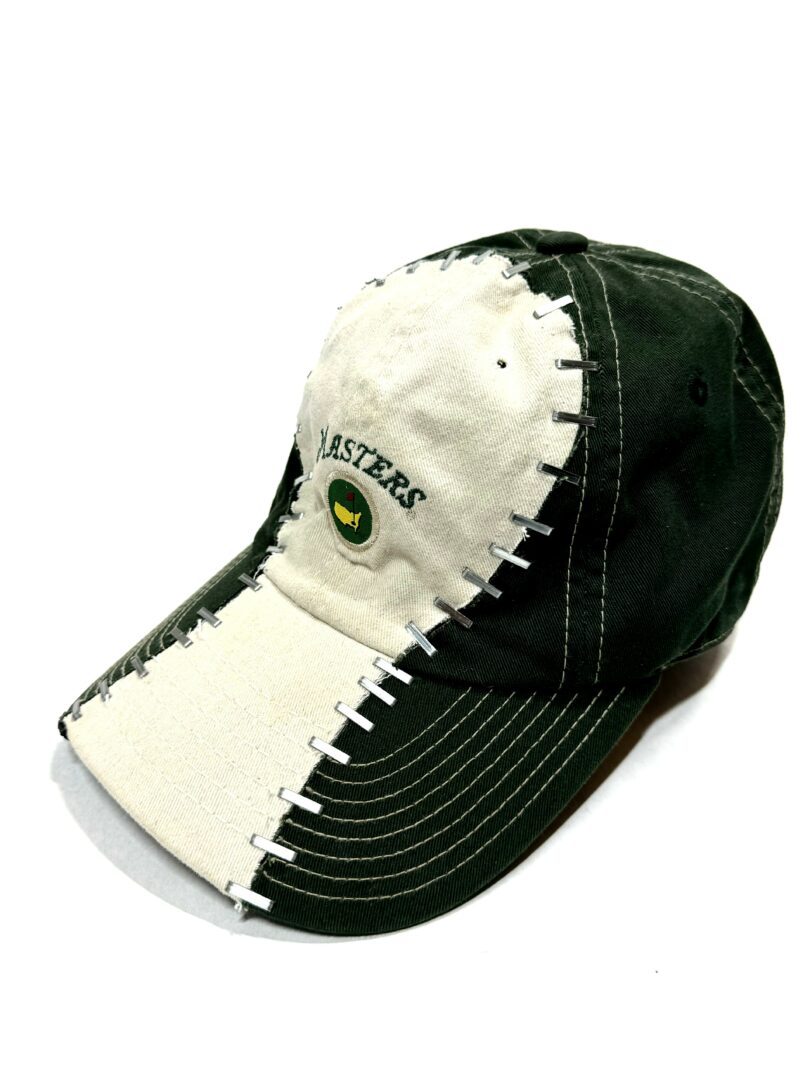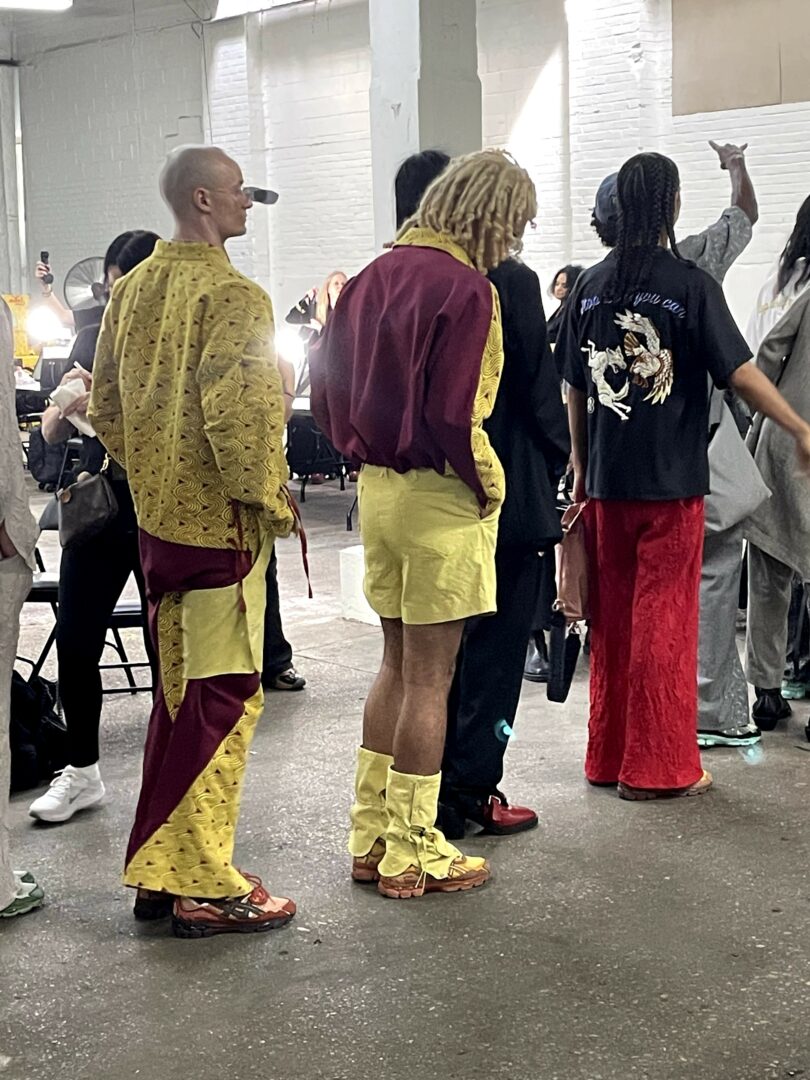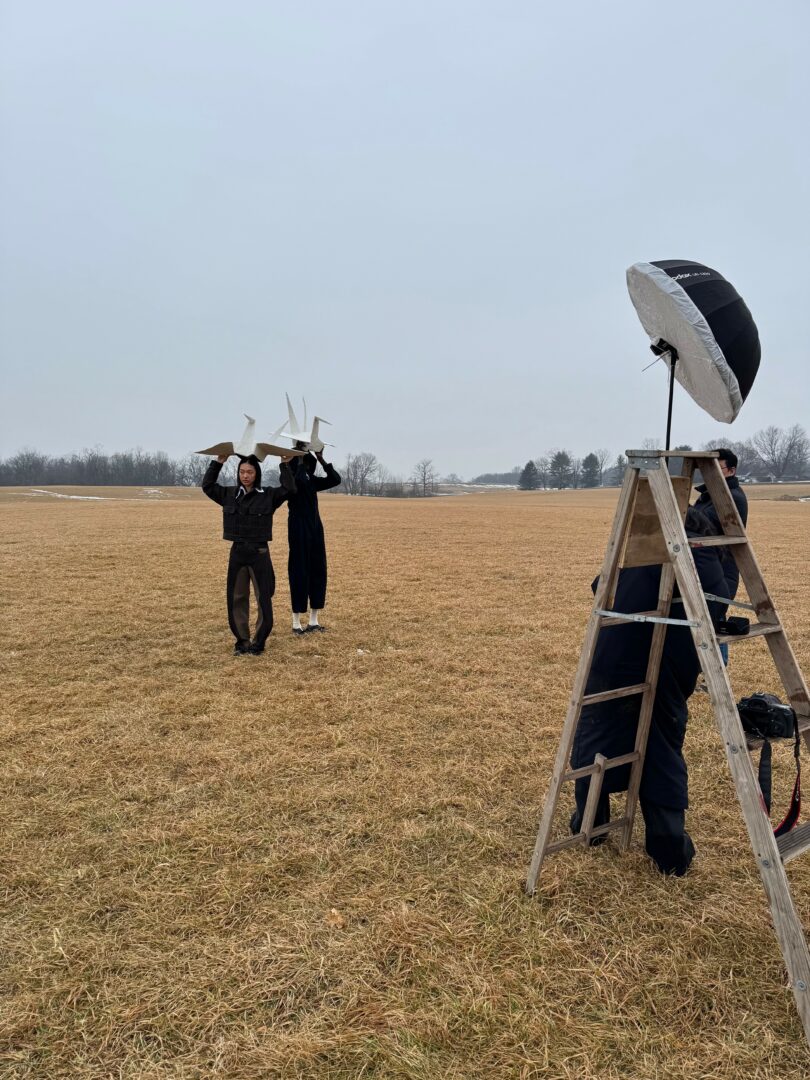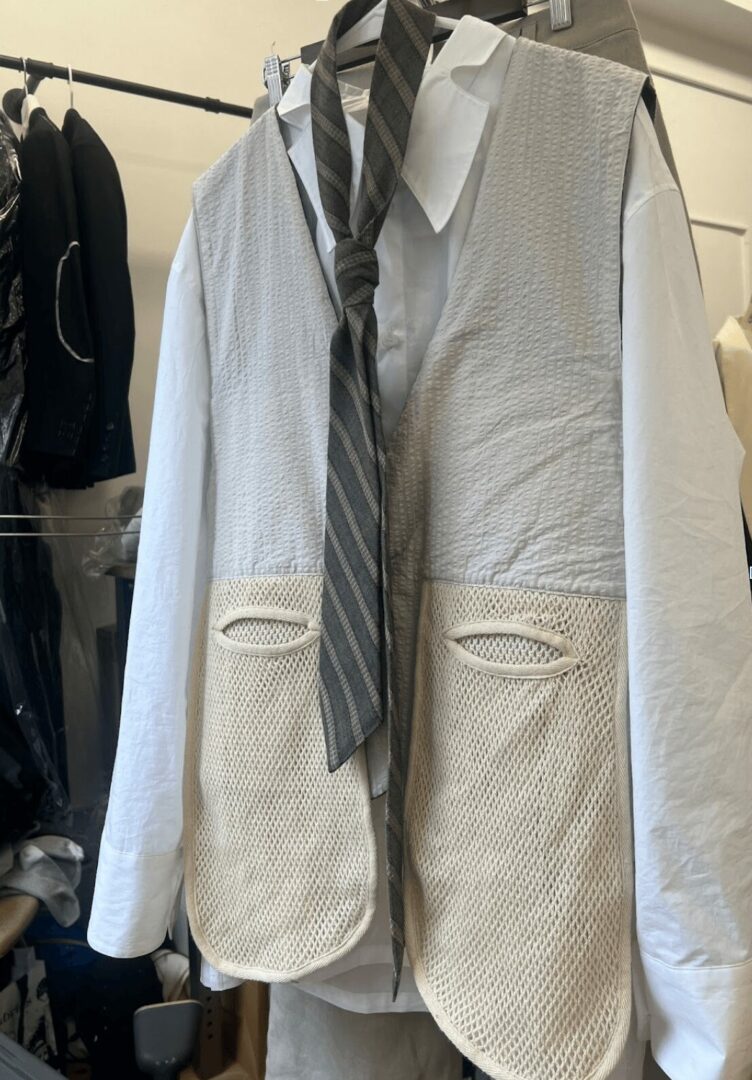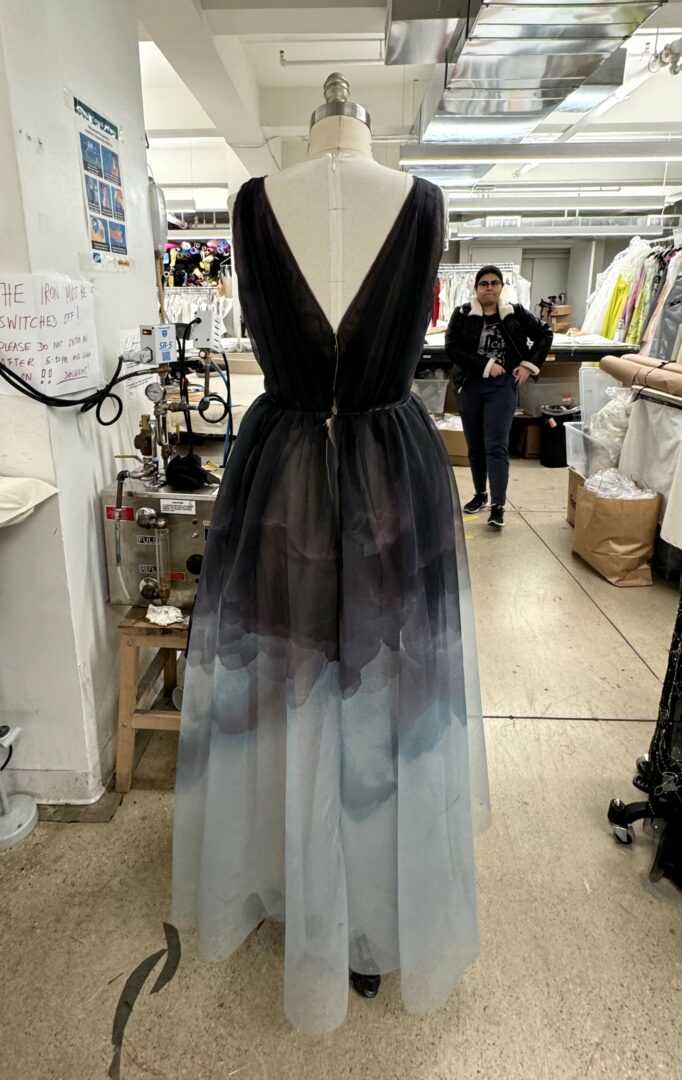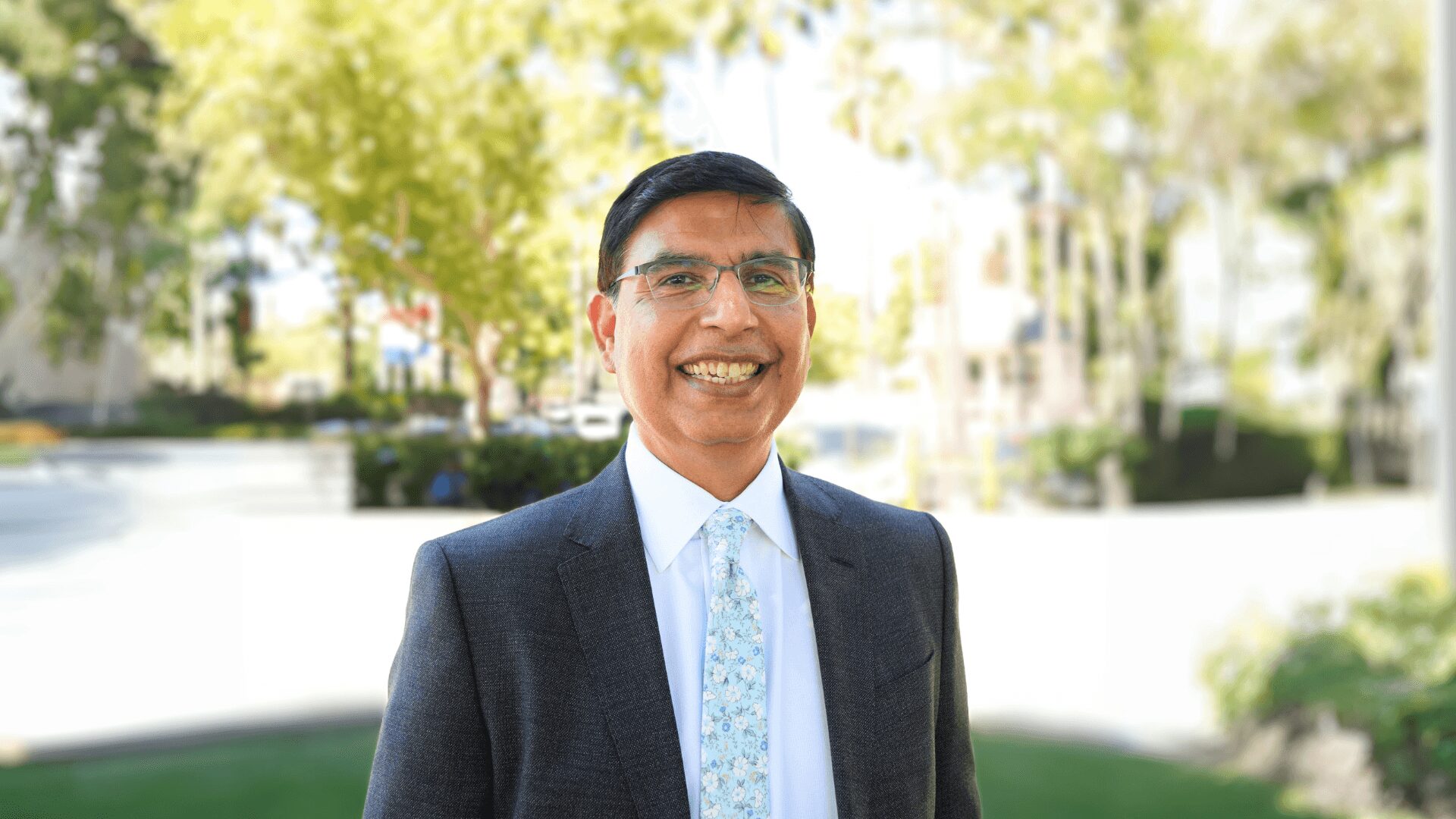Alright – so today we’ve got the honor of introducing you to Esther Park . We think you’ll enjoy our conversation, we’ve shared it below.
Thanks, so before we move on maybe you can share a bit more about yourself?
My name is Esther Park. I was born in South Korea, grew up in New Zealand, and later moved to New York City to study at Parsons School of Design. I’m a fashion designer recognized for my material innovations, and my collections have been featured in Vogue Runway (2023), WWD Korea (2023), Hypebeast (2023), The Vanilla Issue (2025) and Highsnobiety Style (2025).
Professionally, I’ve had the privilege of working with renowned fashion houses while also developing my own practice. At Marchesa, I contributed to the Fall 2024 Ready-to-Wear collection, where I designed Look 13, a piece that became one of the highlights of the season. Vogue Runway (2024) described it as “a floaty, full-skirted midi dress made in a storm cloud-like print,” and concluded that the collection delivered “main character energy to dresses for leading ladies, if not Shakespearean heroines.” To see my work recognized in this way by one of the most respected voices in fashion was incredibly meaningful—it reminded me of the power of merging storytelling with couture-level craftsmanship.
At KOZABURO, I worked on the main line as well as the sub-lines Wave of Sand and Phantom Ranch by KOZABURO from 2023 to 2024. One of my key roles was developing the PRM hats, where I refined a construction technique inspired by Kintsugi, the Japanese art of repairing pottery with gold. These hats gained significant recognition — they were featured in Hypebeast Magazine Issue 35 (2025) and awarded “Best Accessory” at ComplexCon 2024. They also caught the attention of Travis Scott, leading to a collaboration with his label Cactus Jack, which sold out upon release. In addition, fashion legend Michelle Lamy, co-founder of Rick Owens, was seen wearing the PRM hats on multiple occasions, further cementing their cultural resonance and influence within the industry.I also contributed to the 2024 Land of the Setting Sun collection, which was presented at New York Fashion Week in 2023 and was covered in Vogue Runway (2023), WWD (2023), and Hypebeast (2023). Having these designs shown on an international stage and written about in such respected outlets was a career highlight for me—it showed me that my contributions could resonate far beyond the studio.
Most recently, I served as the lead designer for Kubeko’s 2025 collection, “Crying Boy” (developed 2023–2024, released 2025). Designing this collection helped define the brand’s emerging voice, and it received strong critical recognition. The Vanilla Issue (2025) wrote, “Fashion often thrives on spectacle, but Kubeko finds strength in quietness.” To have my work described that way affirmed the vision we pursued: creating garments where meaning is carried through subtle details, materiality, and emotional resonance.
Alongside my collaborations, I’ve developed my own collection, “Raised by a Swan,” which focused on material innovation and emotional storytelling. This work was recognized with four Muse Design Awards in 2025, including two Golds in the Haute Couture and Prêt-à-Porter categories, as well as Runner-Up in the fashion design category at the prestigious A’Design Awards this year. These recognitions meant a lot to me, because they showed that my ideas could stand on their own while also feeding back into the work I do for established fashion houses.
Looking ahead, I’m excited to share that I’ll be leading Kubeko’s 2026 collection as Creative Director. We’re preparing a presentation for Paris Fashion Week, and are planning to stock at Komune and Free Agency, two influential concept stores in New York City. We are also set to be represented at the Le Galerie by LER showroom in Los Angeles, and have a collaborative shoot with Dazed Magazine in the works. In addition, we are planning a collaboration with Charles & Keith on their Style Makers project. For me, this next chapter feels like both a continuation of everything I’ve learned and an opportunity to push fashion into new, multidisciplinary directions.
Looking back, what do you think were the three qualities, skills, or areas of knowledge that were most impactful in your journey? What advice do you have for folks who are early in their journey in terms of how they can best develop or improve on these?
Looking back, the three qualities that have shaped my journey most are material innovation, persistence, and risk-taking.
Material innovation has always been at the core of my work. For me, it’s about creating something authentic rather than following trends. I constantly ask myself: is this truly mine, or am I walking in someone else’s footsteps? That mindset pushed me to develop my pumice stone beading technique, where I crushed fragments of pumice, coated them in enamel paint, and used them as beading on soft, flowing silhouettes. It’s not a material you’d ever expect to see in couture, but it became central to expressing my collection’s concept. My advice to younger designers is to experiment with materials that resonate with you personally, even if they feel unconventional. Authenticity will always set your work apart.
Persistence has been just as important. Innovating with unfamiliar materials meant countless trials, errors, and failed prototypes. It would have been easy to give up, but I learned that persistence is what transforms ideas into breakthroughs. You have to trust the process, even when the outcome feels uncertain. For emerging creatives, I would say: allow yourself to make mistakes, but keep refining. Persistence builds resilience, and resilience creates results.
Finally, risk-taking. This is perhaps the hardest quality to cultivate, because it means putting faith in your vision when no one else has yet. Using pumice stones in couture garments, or introducing fresh interpretations into established fashion houses like Marchesa or KOZABURO, all required me to take risks. But risk is what moves a concept from safe to groundbreaking. My advice is: if you feel something is true to your voice, pursue it fully. Treat the unfamiliar as an opportunity, not a limitation. When you take risks that are authentic to you, you not only expand your own practice but also push the larger industry forward.
All the wisdom you’ve shared today is sincerely appreciated. Before we go, can you tell us about the main challenge you are currently facing?
The biggest challenge I face is the ongoing search for authenticity. For me, that will probably always be the hardest part of being a designer. As I mentioned earlier, you have to trust the process, and for me that means paying attention to the small and often overlooked details in everyday life. I believe it’s those quiet, mundane things that are the most authentic to who we are, even if we don’t always realize it at first. Identifying them isn’t easy. You often only understand their importance when they’re gone, but once I recognize them, that’s when the real work begins. I start playing, developing, and experimenting with these seemingly insignificant objects or emotions, and through that process, I begin to see them in a new light. That shift in perspective is where authenticity emerges, and that’s what carries my work forward.
Contact Info:
- Website: https://industry.notjustalabel.com/esther-park
- Instagram: estherpark03
- Linkedin: www.linkedin.com/in/esther-park-24312a27a
- Youtube: https://www.youtube.com/watch?v=QPC_piYLz9g
